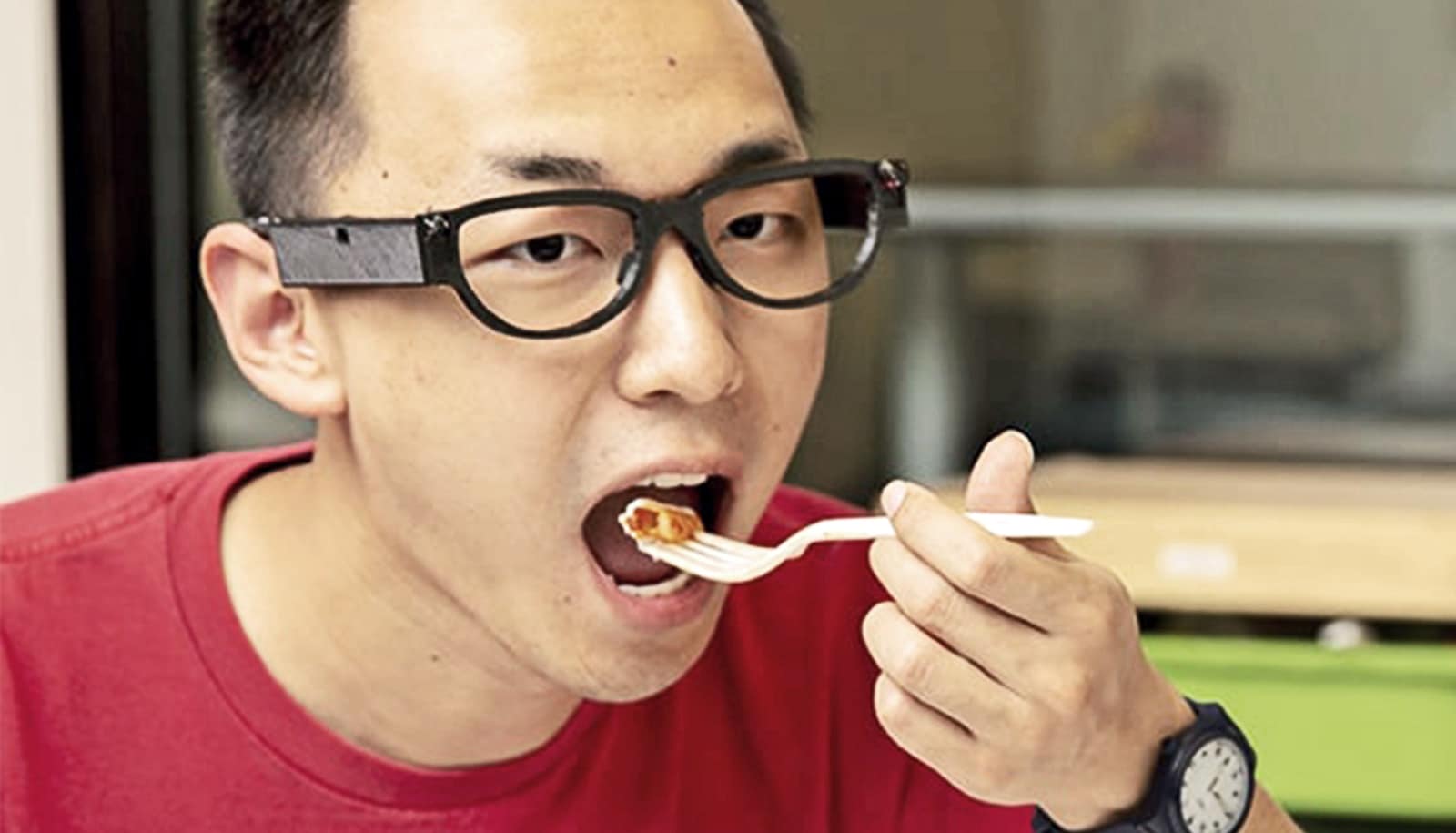A new wearable can help people track their food habits with high fidelity, researchers report.
FitByte, a noninvasive, wearable sensing system, combines the detection of sound, vibration, and movement to increase accuracy and decrease false positives. It tracks behavioral patterns to help users reach their health goals, offering a way to understand the relationship between diet and disease, and to monitor the efficacy of treatment.
The device tracks all stages of food intake. It detects chewing, swallowing, hand-to-mouth gestures, and visuals of intake, and can attach to any pair of consumer eyeglasses.
“The primary sensors on the device are accelerometers and gyroscopes, which are in almost every device at this point, like your phones and your watches,” says Mayank Goel, an assistant professor in the Institute for Software Research and the Human-Computer Interaction Institute at Carnegie Mellon University.
How Fitbyte works
An infrared proximity sensor detects hand-to-mouth gestures. To identify chewing, the system monitors jaw motion using four gyroscopes around the wearer’s ears. The sensors look behind the ear to track the flexing of the temporal muscle as the user moves their jaw.
High-speed accelerometers placed near the glasses’ earpiece perceive throat vibrations during swallowing. The new technology addresses the longstanding challenge of accurately detecting drinking and the intake of soft things like yogurt and ice cream.
A small camera at the front of the glasses points downward to capture just the area around the mouth and only turns on when the model detects the user eating or drinking.
“To address issues of privacy, we’re currently processing everything offline,” says Abdelkareem Bedri, an HCII doctoral student. “The captured images are not shared anywhere except the user’s phone.”
At this point, the system relies on users to identify the food and drink in photos. But the research team has plans for a larger test deployment, which will supply the data deep learning models need to automatically discern food type.
Indoors and outdoors
The researchers tested FitByte in five unconstrained situations including a lunch meeting, watching TV, having a quick snack, exercising in a gym, and hiking outdoors. Modeling across such noisy data allows the algorithm to generalize across conditions.
“Our team can take sensor data and find behavior patterns. In what situations do people consume the most? Are they binge eating? Do they eat more when they’re alone or with other people? We are also working with clinicians and practitioners on the problems they’d like to address,” Goel says.
The team will continue developing the system, adding more noninvasive sensors that will allow the model to detect blood glucose levels and other important physiological measures. The researchers are also creating an interface for a mobile app that could share data with users in real time.
The Conference on Human Factors in Computing Systems (CHI 2020), scheduled for this month but canceled due to the COVID-19 pandemic, accepted the paper for presentation.
Source: Carnegie Mellon University



